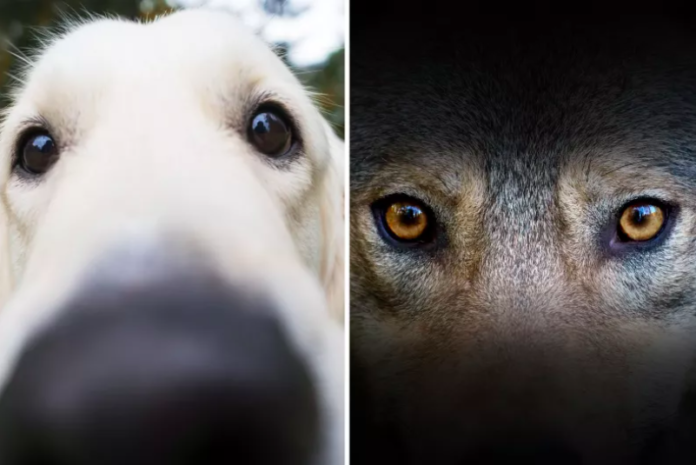Table of Contents
ToggleLast Updated on December 20, 2023 by Fumipets
Humans Prefer Dogs With Certain Eye Color, Scientists Reveal: A Glimpse into Canine Evolution and Human Perception
Introduction: Unlocking the Canine Code of Appeal
In a canine-centric revelation, scientists have unveiled a fascinating connection between humans and their preferred four-legged companions: the color of their eyes. This discovery, published in a recent Royal Society journal, not only sheds light on the evolution of dogs from wolves but also delves into the intricate dynamics of human-canine interactions.
The Evolutionary Journey: From Wolves to Man’s Best Friend
Dogs, our beloved companions, share an ancestral lineage with gray wolves. Through centuries of domestication, they transformed from wild, predatory creatures into the friendly, loyal pets we know today. This evolutionary journey, driven by human influence, has sculpted not only their behavior but intriguingly, their physical characteristics as well.
Decoding the Iris: A Tale of Darkness and Warmth
In a meticulous study comparing 22 gray wolves and 81 domestic dogs, Japanese researchers uncovered a compelling distinction—dog irises were notably darker than those of their wolf counterparts. The iris color, described as “dark brown” in dogs versus the “yellow” in wolves, marked a significant departure between the two species.
Implication: The darker eyes of dogs, as the study suggests, may have evolved purposefully, hinting at a strategic move during the domestication process. This brings us to a riveting question: did dogs adapt their eye color to appeal more to humans?
The Perception Paradox: Dark Eyes and Human Appeal
Facial images of dogs with darker eyes yielded captivating results in human perception. These dogs were perceived as not only friendly but also immature. The allure of dogs with darker eyes transcended their physical appearance, tapping into an emotional response from humans that made them more appealing.
Human Psychology: Dr. Akitsugu Konno of Teikyo University of Science explains that the perception of dark eyes as more friendly and immature suggests an unconscious selection by humans. This preference could stem from a perception of less threat, aligning with the protective nature of domestic dogs, making it an evolutionarily adaptive trait.
Behind the Scenes: The Pupil’s Role in Emotional Responses
The research dives deeper into the mechanics of eye color, emphasizing that darker irises conceal changes in pupil size, making emotional responses less pronounced. Humans, it seems, tend to react more positively to dogs with less visible changes in their pupils, further solidifying the preference for darker-eyed companions.
Human Behavior: Humans often draw conclusions about a person’s personality based on iris and pupil contrast. This tendency extends to our furry friends, influencing our perceptions and, possibly, our choices in selecting canine companions.
Conclusion: Eyes that Speak Volumes
As we unravel the mysteries of the canine world, the revelation that eye color plays a pivotal role in human-dog dynamics adds a new layer to our understanding. Dogs, with their dark and endearing eyes, seem to have adapted not just physically but emotionally to become our cherished companions.
Future Frontiers: Unveiling the Canine Code
While this study opens a captivating window into the world of eye color and appeal, Dr. Konno emphasizes the need for further exploration. With dogs and wolves displaying high morphological diversity worldwide, additional research is essential to confirm the universality of the phenomenon.


















